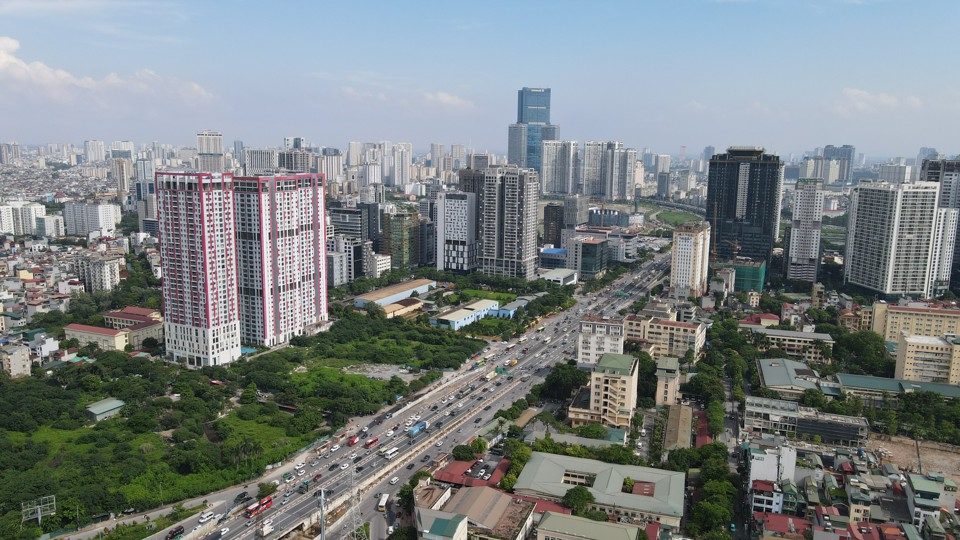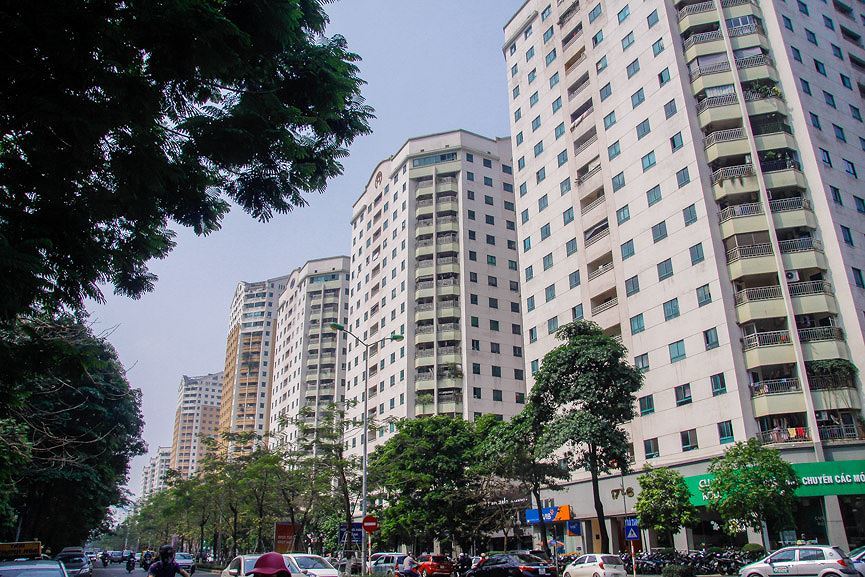Resolution 15 fuels Hanoi's modern look
Expanding the administrative boundaries of Hanoi 15 years ago was a critical step in seizing the opportunity for greater competitiveness and stronger growth.
The goal of the administrative boundary expansion is to transform Hanoi into a versatile, multi-functional center for politics, administration, and urban development. A key aspect of this expansion is the creation of new urban areas to reshape the city's structure and foster a modern, high-rise lifestyle.
| Hanoi's landscape has undergone significant transformation over the years. Photo: Pham Hung/The Hanoi Times |
Enhancing competitiveness
The emergence of multifunctional and highly competitive capitals is an inevitable and objective trend in the development of cities.
This trend can be observed through historical examples when new political-administrative centers were established away from existing capitals. Examples include Canberra, which was built away from Melbourne in 1927, and Brasilia, which was built about 1000 km away from the then capital of Brazil, Rio de Janeiro, in 1960. Both decisions were driven by the need for a more spacious and strategically located capital.
Another example is Putrajaya, which became Malaysia's political-administrative center in 2002, while Kuala Lumpur continued to thrive as a financial center. These cases illustrate how the evolution of capitals is often directed toward becoming economically competitive centers.
Some cities, originally designated as capitals for political reasons, have gradually transformed themselves into major commercial and trading hubs in addition to their administrative functions. On the other hand, certain economic powerhouses attracted political influence and talent, leading to their designation as political-administrative centers while still flourishing as multifunctional urban areas.
In summary, there is no precedent to suggest that a successful multifunctional city would give up its economic competitiveness to become solely a political-administrative center (capital) under normal conditions. Instead, it's typical for capitals to emerge that retain both administrative and economic significance, fostering a vibrant and dynamic urban environment.
In my opinion, it may be easier to designate a certain city as a capital than to build a successful multifunctional city. A city that achieves high economic competitiveness is likely to be a successful capital, but a city with only political-administrative functions is unlikely to be competitive in the broader economic landscape.
Hanoi has always been a multifunctional city, and its success can be attributed to several factors. Its strategic location on the Red River facilitated trade and commerce, while traditional crafts and service industries played an important role. Over time, industrialization since 1954 has transformed Hanoi from a consumer-oriented city to a manufacturing hub.
Today, Hanoi serves as the country's main economic, commercial, cultural, scientific, technological, and transportation center. It is home to 62% of the country's higher education institutions, laying the foundation for a knowledge-based economy.
Observing the shifting economic structure in Hanoi, along with the influx of foreign direct investment (FDI) focused on high-tech industries and research and development (R&D) facilities in nearby areas such as Bac Ninh, Bac Giang, and Vinh Phuc, we see the potential for Hanoi to develop into a city that embraces knowledge and comfort.
This goal of transforming Hanoi into a knowledge-based and competitive city does not contradict its political-administrative function as the capital. On the contrary, being the capital of Vietnam enhances Hanoi's status and allows it to add new functions in line with current trends, making it even more competitive.
Therefore, expanding the administrative boundaries of Hanoi's capital 15 years ago was a crucial step to seize the opportunity for greater competitiveness and stronger growth, and it was necessary to ensure Hanoi's future as a dynamic and thriving city.
| Trung Hoa - Nhan Chinh urban area. |
New urban structure and lifestyles
Hanoi is positioned as the center of an urban area, forming a development corridor with two main poles: Hanoi and Ha Long - Haiphong.
Hanoi's development focus is on the north of the Red River, with the establishment of a system of counterweights and satellite cities to reduce density in the city centers.
Looking to the future of urban development, Hanoi is capable of playing an essential role in the urban system of the region and the world, in addition to being the political, economic and cultural center of the country. The question is whether the city will prioritize this direction as its main development focus.
With its vast undeveloped suburbs, Hanoi has the potential to create high and ultra-high levels of urban amenities. Over time, the city has objectively built a network of modern new residential areas to meet the needs of young, highly educated, and high-income residents.
Two major real estate projects have contributed to changing the urban structure and shaping a new lifestyle, playing a strategic role in Hanoi's socio-economic development.
One of these projects, Trung Hoa - Nhan Chinh, has influenced the development of Hanoi in its transition from a unipolar to a multipolar model.
Located with excellent connections to Ring Road 2 and Ring Road 3, Trung Hoa - Nhan Chinh enjoys high accessibility to all parts of the city. In addition, located at the starting point of the Lang - Hoa Lac Expressway, this area serves as the gateway to the West of Hanoi, a direction that has been planned for urban development since the early 2000s and has been increasingly recognized with the decision to expand the administrative boundaries of Hanoi in 2008.
Originally a mere rice field without any construction, the Trung Hoa - Nhan Chinh New Urban Area has been transformed into a modern space showcasing a new lifestyle centered around skyscrapers and advanced technical infrastructure.
The visions and forecasts for this area are no longer confined to paper or mere debates. Today, one can witness lively scenes of children and elderly people playing and doing aerobics within the spacious and safe 4 hectare twin squares, completely free of motorized traffic hazards.
As night falls, the area comes alive with illuminated doorways, exuding a lively and welcoming ambiance.
With its strategic location, An Khanh Urban Area perfectly adheres to the real estate industry's mantra of "location, location, and location".
Located approximately 12 kilometers from downtown Hanoi, it is positioned to become a development pole, leveraging its potential to create and attract local jobs in the high-end service sector.
In addition, the area benefits from efficient and environmentally friendly transportation options, such as light rail, which can transport human resources from downtown Hanoi to educational institutions such as Vietnam National University and Hoa Lac Hi-tech Park in as little as fifteen minutes.
In addition, the developer's proposal to develop a rail line from North An Khanh that runs close to the urban area from the east and connects directly to Noi Bai International Airport would provide an ideal link.
This could allow passengers in the area to check in their airline tickets as soon as the high-speed train departs from Bac An Khanh station, saving time and significantly reducing travel inconvenience.
Although the implementation of such plans will require time and the mobilization of investment resources, the An Khanh urban area already plays a key role in the strategic relationship with the socio-economic development process of the capital. It is a testament to the successful transformation of a once barren rice field into a thriving, forward-looking urban landscape.
Notwithstanding the importance of the natural environment, cities are essential creations of human society, and their success or failure is never random. The current urban structure of Hanoi, along with the role of satellite cities (or sub-centers, secondary cities), can be seen as a thoughtful preparation for a strategic intervention aimed at achieving Hanoi's high competitiveness as a city of knowledge and comfort within the regional and global urban network. This approach recognizes the importance of human planning and decision-making in shaping the city's future, and lays the foundation for a thriving and competitive urban landscape. |














